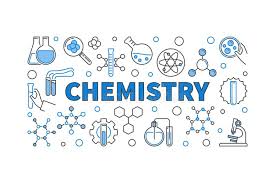GAS LAWS
The volume of a given mass of a gas is inversely proportional to its pressureat constant temperature, i.e 𝑽∝ (if mass of gas and temperature of gasare constant)or, PV = constant Thus, = Real gas obeys Boyle’s law at low pressure and high temperature. Boyle’s law is represented graphically as follows:
The volume of given mass of a gas at constant pressure increases ordecreases by a constant fraction 𝛼(= ) of its volume at C for rise orfall of temperature by C.i.e 𝑽 = [𝟏 + 𝜶𝒕]. This law is also known as Charle’s volume law. The volume of given mass of a gas at constant pressure is directly proportional to its absolute temperature i.e 𝑽∝𝑻 or, V/T = constant Thus, = Charle’s law is represented graphically as follows:
The pressure exerted by a mixture of non-reacting gases at constant temperatureis equal to sum of partial pressure of each components in the mixture.P= +..... Partial pressure = mole fraction x total pressure
The volume of given mass of a gas at constant volume increases or decreasesby a constant fraction𝛼(= ) of its pressure at C for rise orfall of temperature by C. i.e 𝑷 = [𝟏 + 𝜶𝒕]. This law is also known as Charle’s pressure law.But, in Gay-Lussac’s law flexible container is used whereas in Charle’s law rigid container is used.The pressure of given mass of a gas at constant volume is directly proportional to itsabsolute temperature i.e 𝑷 ∝ 𝑻 or, P/T = constantThus, =
Ideal Gas Equation
Here, For n moles of gas, PV = nRT(R = 8.314 J is universal gas constant and is same for all gases)PV = nRT=> 𝑷𝑽 = 𝒎 𝑹𝑻 𝑴=> 𝑷𝑽 = 𝒎()𝑻=> 𝑷𝑽 = 𝒎𝒓𝑻 (m is mass of gas, M is molecular mass, r = R/M is specific gas constant orgas constant per unit mass.)=>𝑷=𝝆𝒓𝑻 ( 𝜌 = is density of gas)Also,PV = nRT=> 𝑷𝑽 = 𝑹𝑻 (N = number of molecules, = avogadro’s number)=> 𝑷𝑽 = 𝑵𝒌𝑻 (K = R/ = 1.3806 x 10-23 J/K is Boltzmann’s constant)
Degree of freedom
Average Kinetic Energy
(f=3)Average KE per mole = 𝑓 𝑅𝑇 = 𝑅𝑇Average KE per molecule = 𝐾𝑇 = 𝐾𝑇 (f=5) :Average KE per mole = 𝑅𝑇 = 𝑅𝑇Average KE per molecule =𝐾𝑇 = 𝐾𝑇
For linear (f=7): Average KE per mole = 𝑅𝑇 = 𝑅𝑇
Average KE per molecule = 𝐾𝑇 = 𝐾𝑇
For linear (f=6): Average KE per mole =𝑅𝑇 = 3𝑅𝑇
Average KE per molecule = 𝐾𝑇 = 3𝐾𝑇
Average translation KE of gas molecule depends only on its temperature but not on its nature.
Law of equipartition of energy:
Here,
According to this law, total energy of gas molecule is equally distributed among all degrees of freedom.
Total KE per mole = 𝑅𝑇
Total KE per molecule = 𝐾𝑇
:
Total KE per mole = 𝑅𝑇
Total KE per molecule = 𝐾𝑇
(Translation only)
:
Total KE per mole = 𝑅𝑇 = 𝑅𝑇 + 𝑅𝑇
Total KE per molecule = 𝐾𝑇 = 𝐾𝑇 + 𝐾𝑇
(Three translation and two rotational)
Mixing of two gases
This law is based on conservation of energy.
Total KE before mixing two gases is equal to total KE after mixing two
gases. (Note: PE is zero so total energy is kinetic)
If n perfect gases at absolute temperature are mixed and
number of respective molecules/moles are then for no energy loss, temperature of mixture is:
=









0 Comments